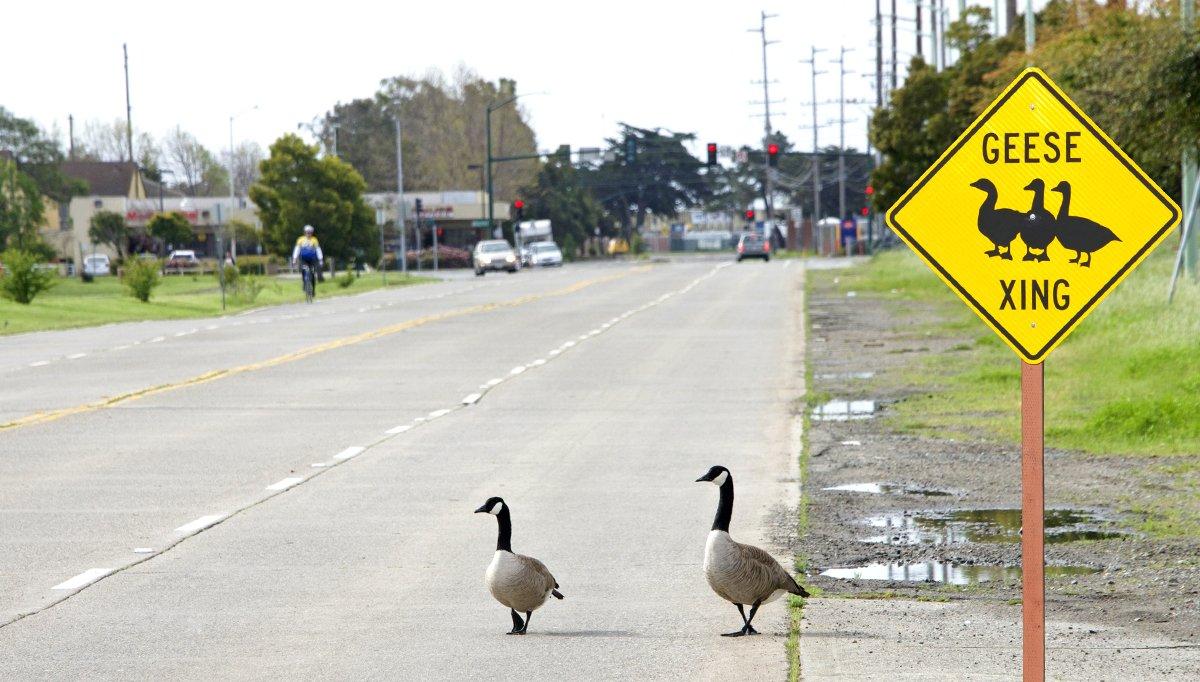High-Flying Ducks and Geese Sometimes Meet Earthbound Vehicles
While constructing a recent blog post about lightning killing snow geese in Idaho, I thought about other odd ways in which waterfowl die. Diseases play a big role. In some high-density situations, boats might fatally strike roosted birds before dawn. And most folks are aware of aircraft smashing into geese and other birds — with dire consequences for fowl and humans alike.
But then my mind turned to road-kill. Typically, that's not a fate we consider for waterfowl. Sure, urban geese and park ducks can present traffic challenges in city and suburban parks or golf courses, but wild birds? I've seen enough examples to know it happens from time to time.
Years ago while turkey hunting in Missouri, some friends and I drove up on a freshly flattened hen mallard. No doubt, she'd had a nest nearby and had probably been walking across the town road when a truck surprised — and pancaked — her.
Highway bridges seem to act as waterfowl kill boxes now and then. During a foggy morning commute a decade ago, I watched a flock of Canada geese lift off a large river and slowly gain altitude over a busy four-lane highway bridge. Maybe the fog hindered their vision, or perhaps they just misjudged the situation, but most of the birds flared violently when a semi zoomed just underneath them. One didn't make it, slamming into the side of the truck and then spinning into the median, dead.
I'm guessing the same thing happened a few years later to a big drake common merganser on that bridge. I didn't see the incident, but as I drove to work one afternoon — after taking off that morning to hunt ducks, ironically — I glimpsed the unmistakable white belly and brilliant green head of a big sawbill. The bird was dead along the shoulder by a concrete bunker, probably having been plastered by a truck while in flight.
The most spectacular road kill I witnessed occurred during a blizzard in South Dakota. Two friends and I were stuck behind a slow snowplow as we drove back to camp, after having taken a great three-man limit of mallards and pintails in a bean field that morning. As the plow lumbered over a narrow highway between two large lakes, a green-winged teal zipped along on the 50-mph sustained wind and slammed headlong into the plow. The impact sent its carcass high into the air, and then it splashed down dead in the lake on the opposite side. I wished I had video of the incident, because the poor duck looked like a baseball popped up into the stratosphere by a Major League hitter.
But the highway waterfowl incident that topped them all doesn't precisely meet the definition of road kill. A friend and I were hunting geese in an oat field that bordered a busy central Wisconsin highway when a large flock finished like a dream. We each doubled — or so we thought. One of the birds my buddy shot sailed a bit and then hit the ground running. Naturally, my partner gave chase, hoping to gain enough distance on the goose to get a finishing shot. However, the bird headed toward the highway, and soon, with regular vehicle traffic passing by, my friend knew he couldn't risk firing at the goose. Still, he continued chasing it, determined to dispatch the honker.
As the goose reached the road, a school bus approached. The driver must have seen the bird immediately, because he slowed the bus and then stopped and allowed the goose to cross the highway. My buddy — a popular local official — waved at the driver and also crossed the road. Soon, he cornered the goose in the opposite ditch (on land he had permission to hunt) and finished it.
Funny. The one time you'd want a bus to hit a goose, the driver was courteous and let it pass.
Click here for more Realtree waterfowl hunting content. And check us out on Facebook.








